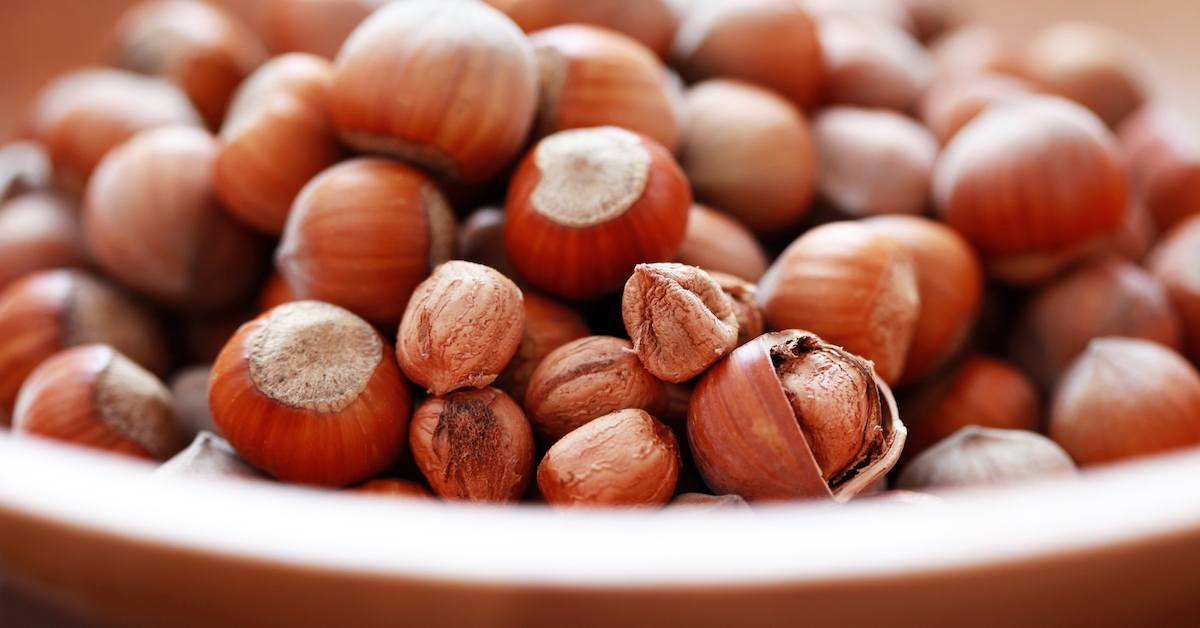The industry has thrived in the state of Oregon for over a century.
Grown in 800 orchards — many of which have been farmed by the same family for generations – and covering 70,000 acres, the state produces 99% of the US crop of hazelnuts.
Hazelnuts are an excellent source of many nutrients including folic acid, manganese, copper and fiber, and contain plant chemicals unique to themselves that cut the risk of heart disease and cancer.
Researchers at Oregon State University (OSU) wondered whether eating this particular nut could boost vitamin E and magnesium levels in the body. Many people are deficient in these essential nutrients.
Magnesium and E are also strongly connected to brain health. Here’s what the research says. . .
Brain Nutrients
Vitamin E is a fat-soluble nutrient that plays a pivotal role in the brain. It maintains the integrity of cell membranes and is one of the most important antioxidants.
Clinical trials which supplemented vitamin E (in the alpha tocopherol form) have demonstrated brain benefits in Alzheimer’s, but the studies do not all agree. Some of them showed few or no benefits.
That doesn’t surprise me. There are eight forms of vitamin E, and alpha tocopherol is not even the best. Yet it’s the only one found in most E supplements.
Much better results are seen when the vitamin comes from food. Then it’s been found that elevated levels decrease the risk of dementia and Alzheimer’s, and reduce cognitive decline.
The ideal is to consume – in food, not a pill — a mix of the different forms of tocopherol that make up the vitamin E complex.
In spite of its importance, 90 percent of American adults do not meet the estimated average requirement of 12 mg a day.
Magnesium is another nutrient where millions of people consume less than the recommended dietary allowance (RDA). For those aged 51 and over, that is 320 mg for women and 420 mg for men. (The difference is because men, on average, are larger than women.)
E has important functions in the nervous system, and scientists believe it has the potential to prevent and treat neurological disorders.
Increasing low levels of the mineral by eating wisely will likely improve memory, reduce the risk of developing mild cognitive impairment, and lower the rate of dementia from any cause.
Body Levels Boosted
To find out if Oregon’s official state nut could increase body levels of these two “shortfall nutrients,” researchers at OSU’s Linus Pauling Institute recruited 32 men and women aged 55 and older.
The participants were asked to consume 57 grams (two ounces) of hazelnuts every day for 16 weeks. (That’s a lot of hazelnuts.) Blood and urine samples were taken at the start and conclusion of the trial.
Results revealed increased blood concentrations of magnesium. Greater amounts of vitamin E were also absorbed into the body, as shown by higher urinary levels of the breakdown product of alpha tocopherol called alpha carboxyethyl hydroxychromanol or alpha-CEHC.
A Natural Multivitamin
According to one of the study authors, Dr. Alex Michels, “This is one of the first times a study of this type has focused only on older adults. We wanted to fill in a piece of the puzzle — can hazelnuts improve the nutritional status of older adults specifically?”
Another member of the research team, Professor Maret Traber, added, “It’s hard to determine changes in alpha tocopherol levels in the blood of older adults…so what we did instead was look at the urine to see how much of a vitamin E catabolite [alpha-CEHC] was in it. The catabolite should only increase if the body is getting enough vitamin E.
“We saw urinary alpha-CEHC levels go up in almost every participant.”
Besides improvements in magnesium and vitamin E, blood analysis showed decreases in glucose and LDL “bad” cholesterol.
“All of which says,” Professor Traber continued, “that hazelnuts are good for you.”
“The findings demonstrate the power of adding hazelnuts to your diet; of just changing one thing. Vitamin E and magnesium are two of the most under-consumed micronutrients in the U.S. population, and there’s much more to hazelnuts than what we analyzed here.
“They’re also a great source of healthy fats, copper and B6…hazelnuts represent a multivitamin in a natural form.”
I wouldn’t be surprised if the drop in blood sugar in this study occurred because two ounces of hazelnuts is quite filling – at about 350 calories it’s practically a meal — and they mainly contain fats rather than carbs.
Nuts of all kinds are a healthy treat. They’re especially useful if you have a hard time eating right. They taste good, they’re easy, they require no preparation, they curb your appetite, and they’re loaded with valuable nutrients.
And they can certainly play an important role in protecting the brain and defending against dementia.







